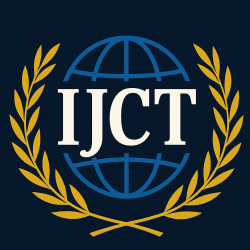
Where’s My Email? Mapping Your Online Accounts – Volume 12 Issue 5

International Journal of Computer Techniques
ISSN 2394-2231
Volume 12, Issue 5 | Published: September – October 2025
Author
Abid Banthanal , Rajashekar , Darshan N , Vijeth M
Table of Contents
ToggleAbstract
In today’s digital landscape, individuals create online accounts across numerous platforms, resulting in an extensive and often unmanaged digital footprint. Over time, many users lose track of where their email addresses have been used, increasing the risk of data breaches, identity theft, and privacy violations. This project, “Where’s My Email? Mapping Your Online Accounts,” aims to develop a system that enables users to identify and monitor online accounts associated with their email addresses. By leveraging data breach repositories, open-source intelligence (OSINT) techniques, and email-based lookup tools, the system offers detailed insights into linked accounts, potential vulnerabilities, and exposed credentials. The project seeks to enhance cybersecurity awareness by empowering users with greater visibility over their digital presence, ultimately supporting informed decision-making in account management and proactive risk mitigation.
Conclusion
In today’s hyper-connected world, where email addresses serve as gateways to countless digital services, the importance of maintaining visibility and control over one’s online presence cannot be overstated. The review of existing tools, platforms, and research clearly reveals that while various solutions exist for data breach notifications and OSINT-based scanning, there remains a critical gap in providing users with a centralized, proactive, and user-friendly system for mapping their email-linked accounts. The tools examined — from HaveIBeenPwned and DeHashed to Maigret and theHarvester — serve specific purposes but fall short in delivering a holistic picture. Similarly, academic research highlights the psychological and technical challenges users face when managing digital footprints, particularly in the absence of tools tailored for this purpose. These gaps, combined with the growing threat of credential stuffing, identity theft, and dormant account exploitation, demand a new kind of solution. The proposed system, “Where’s My Email? Mapping Your Online Accounts,” directly addresses these issues. By leveraging OSINT techniques, breach databases, and intelligent classification mechanisms, it empowers users with actionable insights and control. Unlike traditional tools, it focuses not just on post-breach alerts, but on proactive identity management — helping users reduce digital clutter, minimize exposure, and strengthen their cybersecurity posture. As digital identity becomes a core concern for individuals and organizations alike, projects like this stand at the intersection of usability, security, and awareness. This literature survey provides a solid foundation for further development, encouraging a smarter, safer, and more informed interaction with the digital world.
References
1. T. Hunt, Have I Been Pwned, [Online]. Available: https://haveibeenpwned.com 2. DeHashed, Search Engine for Leaked Data, [Online]. Available: https://www.dehashed.com 3. Mozilla, Firefox Monitor, [Online]. Available: https://monitor.firefox.co 4. theHarvester, GitHub Repository. [Online]. Available: https://github.com/laramies/theHarvester 5. Maigret, GitHub Repository. [Online]. Available: https://github.com/soxoj/maigret 6. Sherlock, GitHub Repository. [Online]. Available: https://github.com/sherlock-project/sherlock 7. Recon-ng, GitHub Repository. [Online]. Available: https://github.com/lanmaster53/recon-ng 8. G. Acar et al, “The Web Never Forgets: Persistent Tracking Mechanisms in the Wild,” in Proceedings of the ACM SIGSAC 2014 9. D. Thomas et al, “Account Reuse and Impersonation on the Web,” in USENIX Security Symposium, 2016. 10. S. Ruoti et al, “Understanding the Privacy Practices of Email Providers,” IEEE Security & Privacy, vol. 18, no. 2, 2020 11. Cybersecurity Ventures, “The Forgotten Accounts Report,” 2021. 12. OWASP, Open Source Intelligence (OSINT) Resources, [Online]. Available: https://owasp.org/www-community/OSINT_Tool 13. SANS Institute, “Digital Footprint and Privacy Risk Analysis,” [Online Whitepaper], 2022 14. Kaspersky Labs, “Data Leaks and Email Exploits in 2020s,” [Online]. Available: https://www.kaspersky.com/blog/data-leaks-analysis 15. SpringerLink, Digital Identity Research Collection Online]. Available: https://link.springer.com
IJCT Important Links
© 2025 International Journal of Computer Techniques (IJCT).









